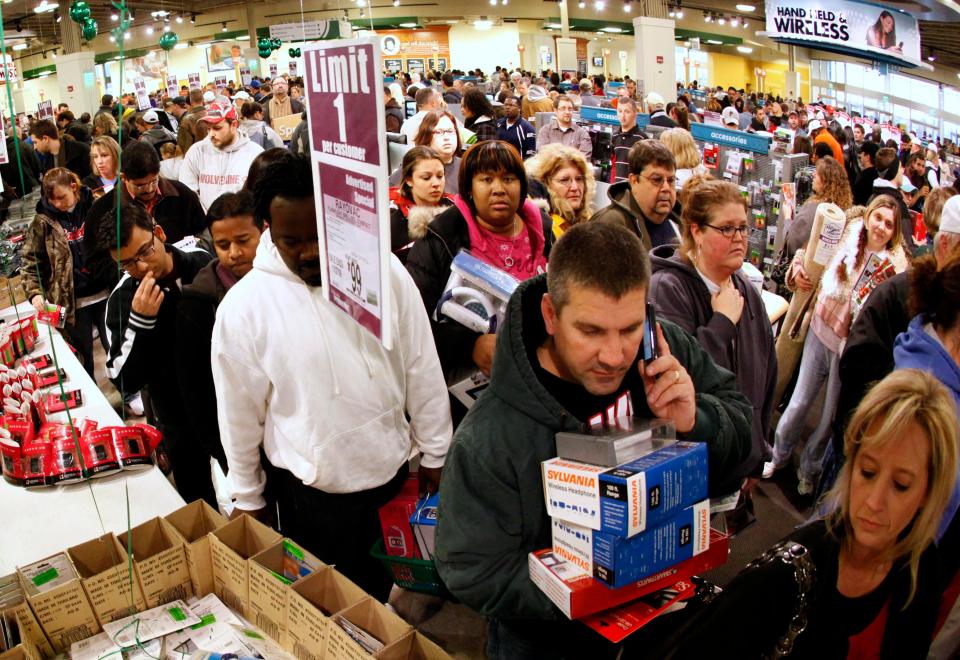Why is Black Friday called Black Friday? Looking at the holiday's history

For some, the "traditional" Black Friday means mile-long lines outside Walmart stores, shoppers sprinting through the aisles and tussles at checkouts as people fight "Hunger Games"-style for the newest flat-screen TV or kitchen appliance.
But the reality is changing, experts say, as online deals during Cyber Monday have kept shoppers at home with the ability to leisurely peruse deals that often last through November.
Though the intensity of the day has maybe lessened over the years, Black Friday still falls on the Friday after Thanksgiving, which, this year is Friday, Nov. 24.
Here's a crash course on how the holiday got its start and name.

Why is Black Friday called Black Friday?
The first recorded use of the term "Black Friday" was, ironically, not linked to hoards of people spending money post-Thanksgiving but, rather, financial ruin.
The first technical Black Friday landed Sept. 24, 1869, the day the United States' gold market crashed. Two Wall Street financiers, Jay Gould and Jim Fisk, worked to buy up as much of the nation's gold as they could in an effort to drive up the price and make profits. But on that Friday in September, their plan failed, obliterating the market and bankrupting everyone.
When did Black Friday begin?
Black Friday wouldn't come to mean a day of shopping until nearly a century after its first reference to the U.S. gold market crash in 1869.
In the 1950s, police in Philadelphia used the term to complain about the mass of shoppers coming into the city to shop the day following Thanksgiving. From then on, the idea gained momentum.

Originally, retailers attempted to rebrand the occasion as "Big Friday" out of fear that "Black Friday" carried negative connotations. But they were unsuccessful, and the term caught on nationwide around the 1980s.
Over time, retailers created a more positive narrative that Black Friday really references a "red to black" economic idea: After operating at a loss all year (in the red) stores would earn a profit (or go into the black) on the day after Thanksgiving, with shoppers blowing money on holiday deals.
Throughout the 2010s, markets around the world began to adopt the shopping day, as American-owned retailers offered Black Friday deals overseas.
When Black Friday turned to violence, chaos
The first widely-recorded Black Friday death occurred in 2008, when a Walmart employee, Jdimytai Damour, was trampled to death. More than 2,000 shoppers stampeded into the store at Green Acres Mall in Valley Stream, Long Island.
Injuries and deaths continued on into the 2010s, including the 2011 death of 61-year-old Walter Vance, who collapsed while shopping at a Target in West Virginia as shoppers proceeded to step over him and continue shopping.
Ultimately the introduction of Cyber Monday has lessened the chaos of Black Friday, with stampedes and brawls becoming less common as shoppers opt for virtual deals.
This article originally appeared on Cincinnati Enquirer: Why is Black Friday called Black Friday? Looking at its history

